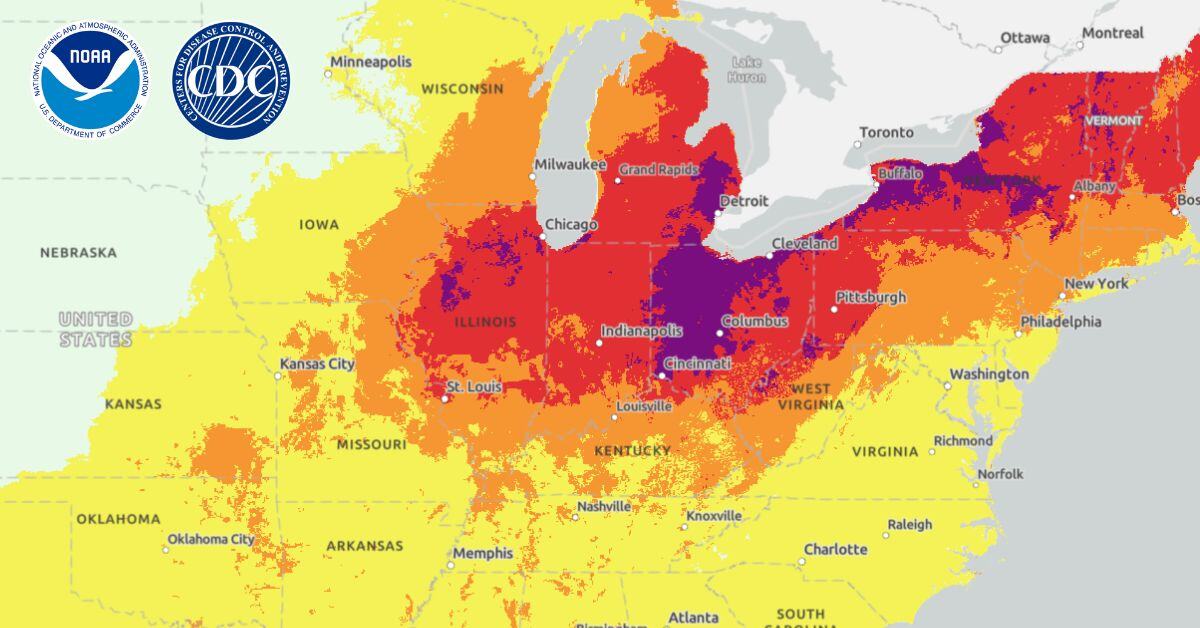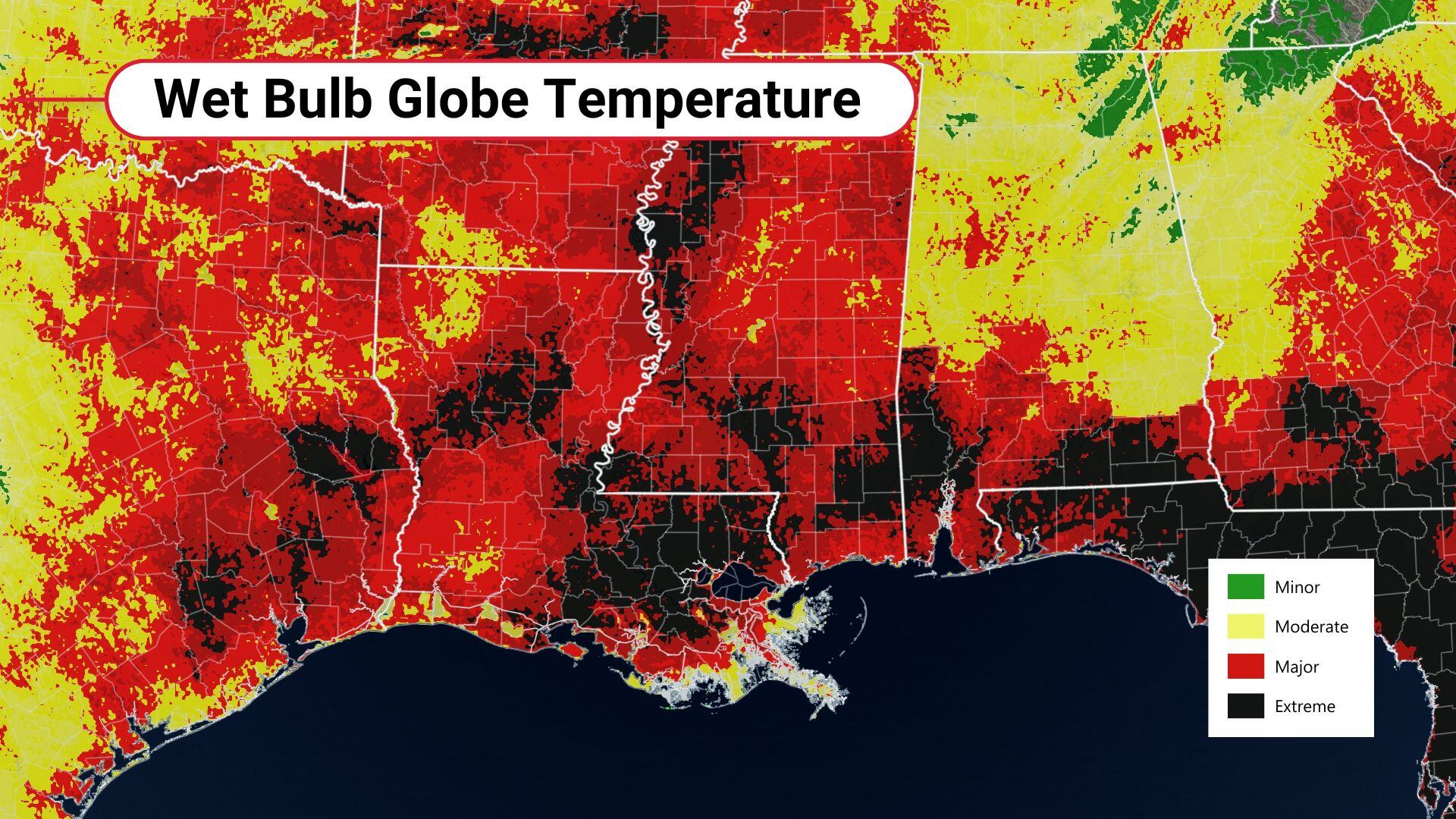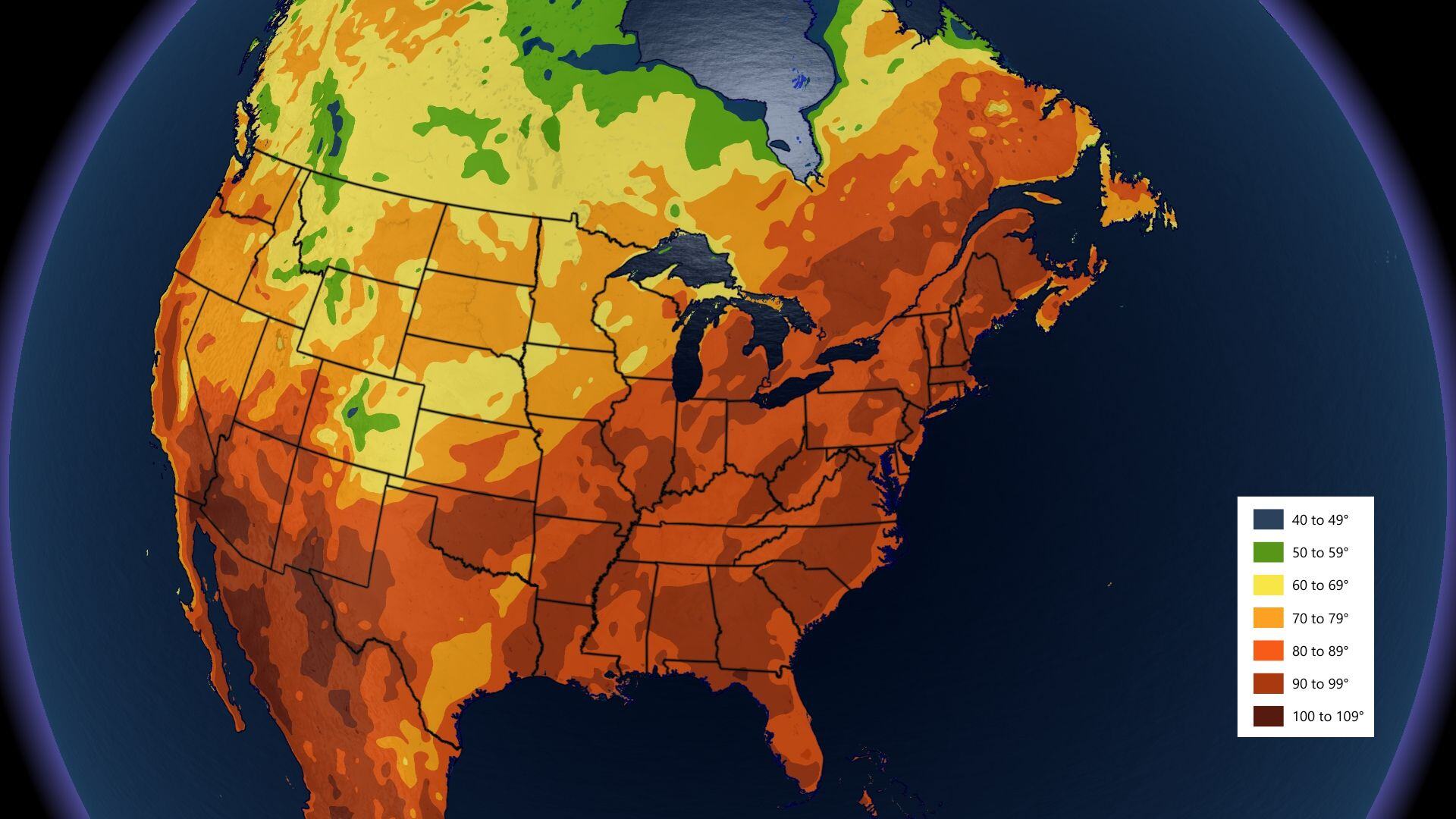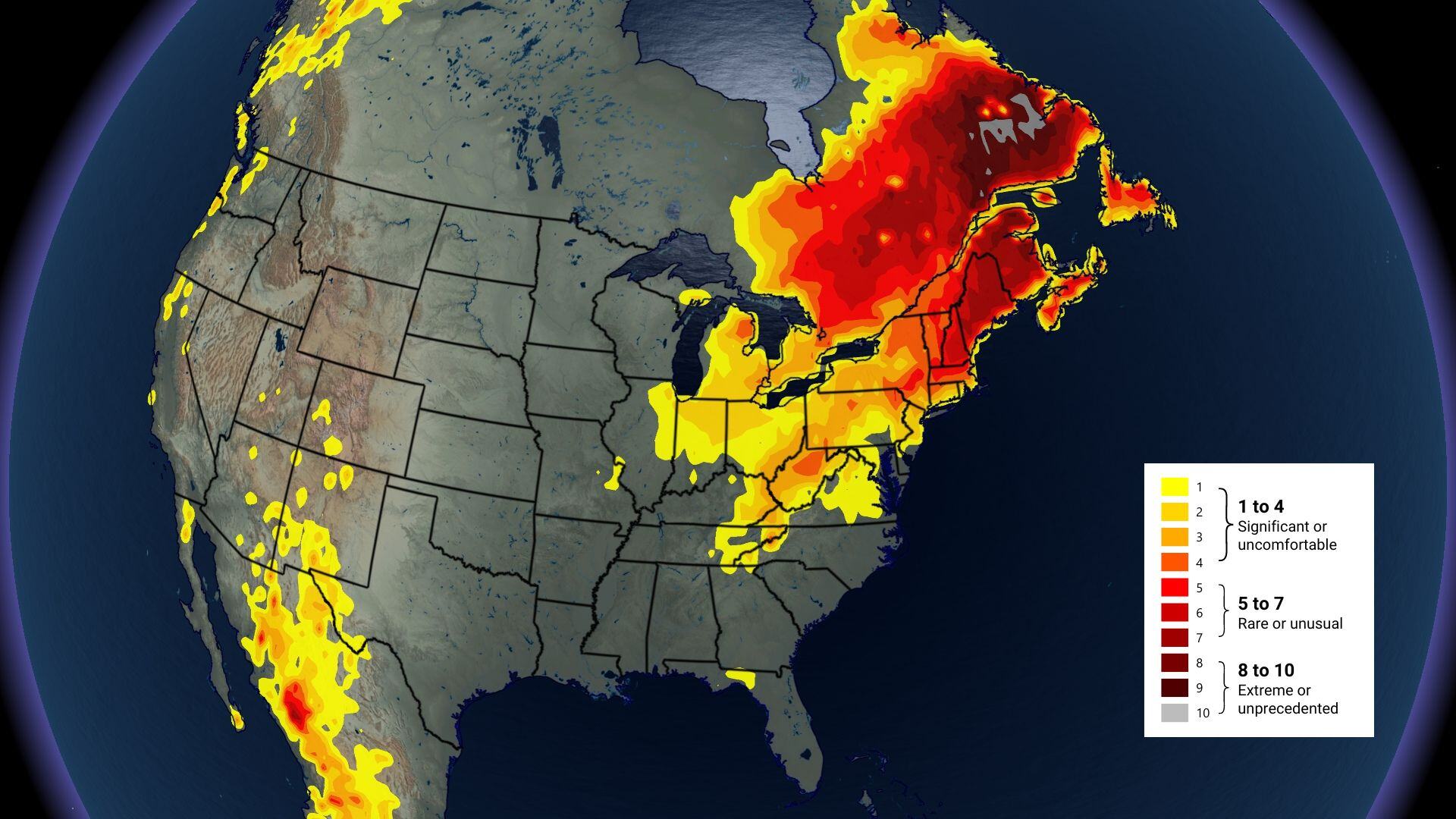Il fait chaud. Mais c'est aussi l'été.
S'agit-il d'une vague de chaleur ? S'agit-il de la plus forte chaleur jamais enregistrée ? Ou est-ce tout à fait normal ?
Chaque été, les vagues de chaleur font la une des journaux, les qualifiant d'extrêmes, de mortelles ou de sans précédent. Mais ces mots peuvent être trompeurs s'ils ne sont pas replacés dans leur contexte.
De nombreux facteurs doivent être pris en compte lors de l'évaluation des conséquences potentielles des températures infernales. Connaître les différents types de risques liés à la chaleur et les meilleurs outils pour les détecter peut vous aider à distinguer un événement nuisible d'un phénomène extrême.
La durée peut être plus dangereuse que les chiffres
Un jour ou deux de canicule peuvent faire parler d'eux, mais la longévité d'une vague de chaleur peut souvent avoir plus d'impact. Cela est particulièrement vrai lorsque les températures nocturnes ne sont pas assez fraîches pour apporter un soulagement suffisant ou lorsque des journées successives de forte consommation d'énergie épuisent les réserves.
L'eau est un mauvais conducteur thermique, ce qui signifie que l'air humide se réchauffe et se refroidit beaucoup plus lentement que l'air sec. Des journées et des nuits répétitives avec un taux d'humidité élevé et des températures chaudes, même si elles ne battent pas des records, peuvent devenir un risque sanitaire généralisé pour les communautés vulnérables et un cauchemar pour les entreprises de services publics.
La géographie, la démographie et les ressources économiques déterminent principalement la vulnérabilité d'une population aux effets de la chaleur. Une nouvelle carte expérimentale HeatRisk du National Weather Service prend fortement en compte l'acclimatation régionale à la chaleur, tant sur le plan saisonnier que climatologique.

Une période ininterrompue de chaleur et d'humidité brutales peut mettre la vie en danger n'importe où, même dans les régions où le temps chaud est plus courant, comme dans le Sud-Est. Les organisations doivent être préventives et savoir reconnaître quand le stress dû à la chaleur peut avoir un impact sur leurs activités ou sur la sécurité de leurs employés.
Un seul jour peut être mortel
Une vague de chaleur se définit comme une période de temps anormalement chaud allant de deux jours à plusieurs mois. Mais la bonne combinaison de chaleur dangereuse pendant seulement quelques heures peut également mettre en danger la vie d'une personne, même si elle est jeune et en bonne santé.
Le Wet Bulb Globe Temperature (WBGT) est un outil permettant de mesurer les contraintes immédiates subies par le corps humain en cas d'exposition directe au soleil. Il associe le rayonnement solaire à la température, à l'humidité et à la vitesse du vent afin d'évaluer les niveaux d'exposition appropriés pour des activités spécifiques.

Le WBGT est le plus souvent utilisé par les militaires, les départements sportifs des universités et le personnel de sécurité publique pour se préparer à des événements en plein air. En raison de la variabilité locale du vent et de l'ensoleillement, une prévision WBGT est plus efficace dans les 24 à 48 heures, et une WBGT supérieure à 90 est généralement considérée comme dangereuse pour les activités intenses.
Le "jamais vu" n'est plus une excuse
Un troisième type de risque lié à la chaleur est celui qui est tellement farfelu qu'une préparation et une réponse adéquates n'ont jamais été envisagées à grande échelle. Un exemple récent est la vague de chaleur "stupéfiante" qui a battu des records dans le nord-ouest du Pacifique en juin 2021. Le changement climatique a augmenté la probabilité que des vagues de chaleur historiques atteignent des régions qui n'en ont jamais connu dans l'histoire moderne.
Baron a mis au point un modèle appelé "Extreme Weather Index" qui peut alerter votre équipe d'un événement potentiellement sans précédent. La chaleur extrême est l'un des six risques que le modèle détecte avec précision jusqu'à dix jours à l'avance. Les autres risques prévus par le modèle sont le froid extrême, les vents violents, la grêle, les fortes pluies et la neige.
Voici un exemple de la façon dont l'indice météorologique extrême a identifié une vague de chaleur dans l'est du Canada le 19 juin 2024 comme étant "extrême" et proche du sommet de l'échelle. Remarquez que les températures réelles prévues étaient semblables à celles du tiers est des États-Unis. La différence est que la chaleur dans l'est du Canada était de 20 à 30 degrés supérieure à la normale et a même atteint des records dans certaines régions.


La comparaison des images ci-dessus montre la différence entre un modèle de prévision indiquant une chaleur généralisée (à gauche) et l'indice Baron Extreme Weather Index qui ne met en évidence qu'une chaleur sans précédent (à droite).
L'indice Baron des conditions météorologiques extrêmes évalue les menaces météorologiques atypiques par rapport aux normes historiques sur une échelle simple basée sur l'impact. Un écart de base par rapport à la valeur normale n'équivaut pas toujours à un impact potentiel. Cependant, lorsque vous associez l'ampleur de l'anomalie à la climatologie locale et aux résultats probables, il peut s'agir d'une couverture de sécurité pour aider votre organisation à se préparer à ces événements "jamais vus auparavant".
Au cours des 30 dernières années, la chaleur excessive a été la cause la plus fréquente de décès liés aux conditions météorologiques aux États-Unis. Qu'il s'agisse du stress causé par plusieurs jours d'humidité élevée, de quelques heures d'activités risquées sous le soleil brûlant ou d'une vague de chaleur sans précédent, le fait d'armer votre organisation avec les bons outils pour comprendre les risques liés à la chaleur peut protéger vos employés et peut-être même leur sauver la vie.
